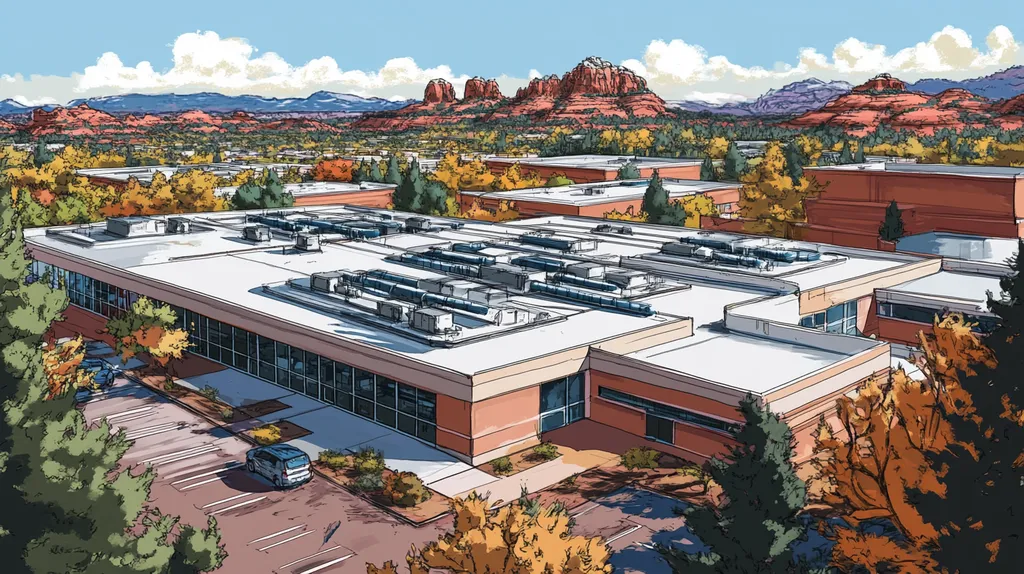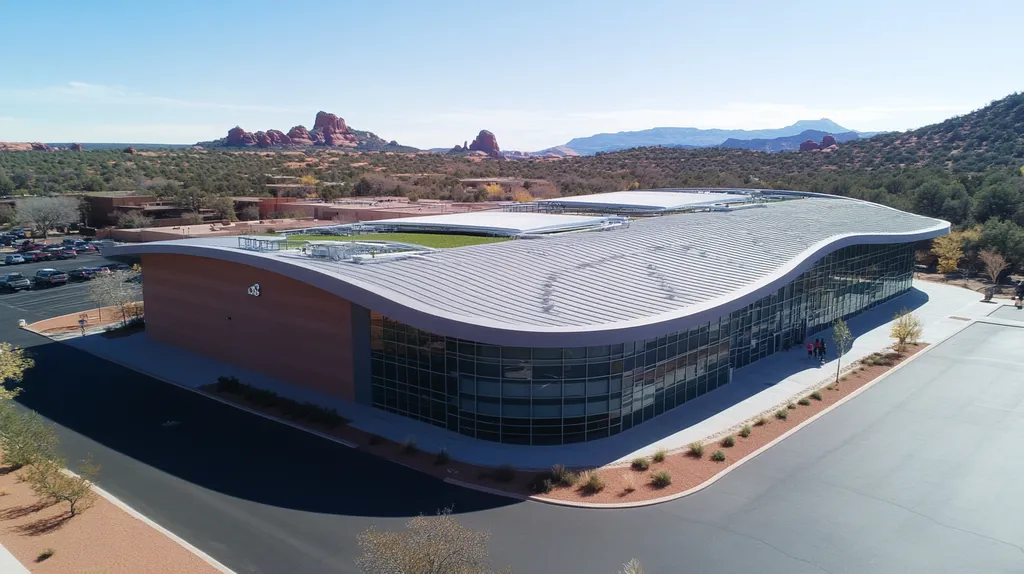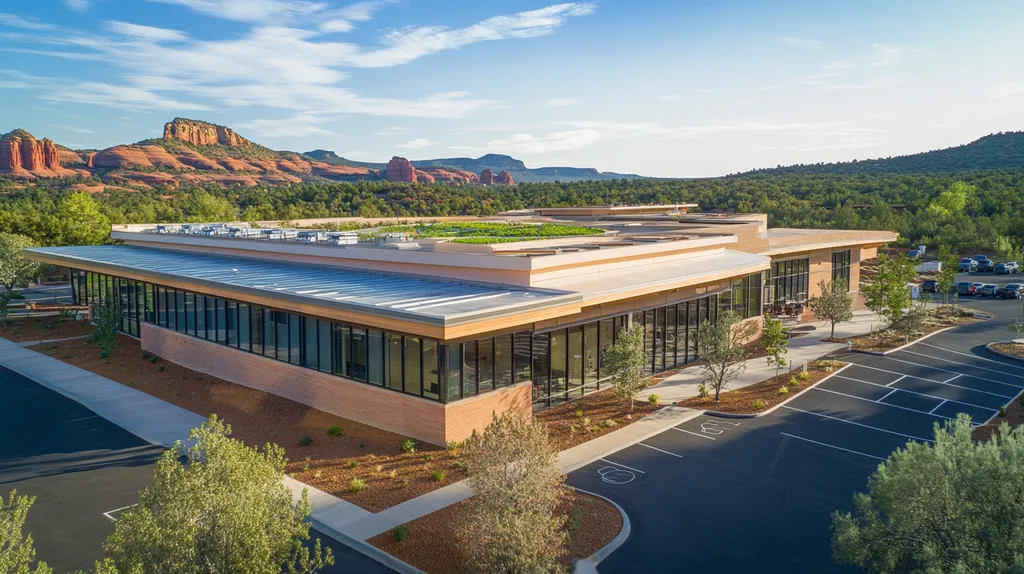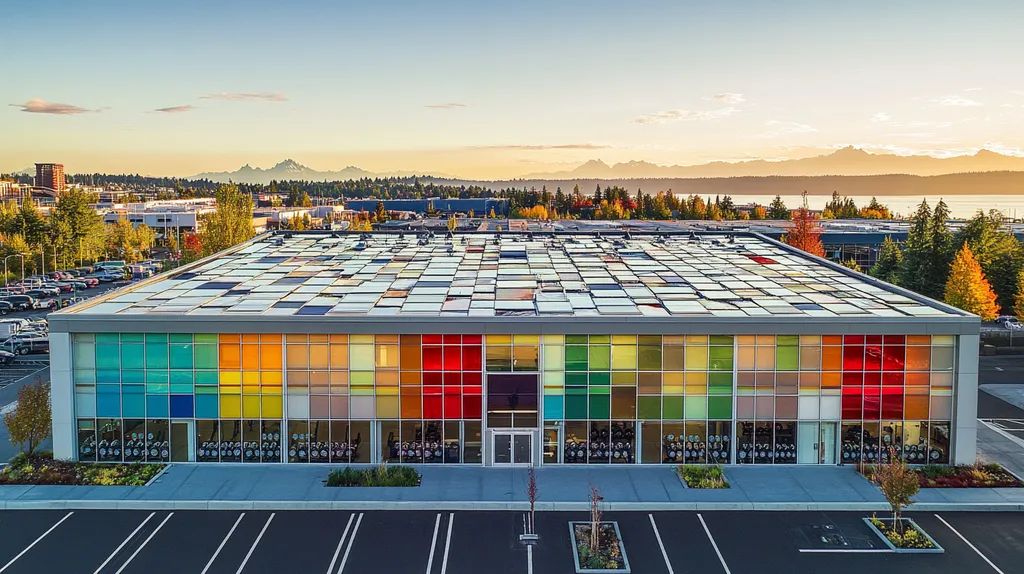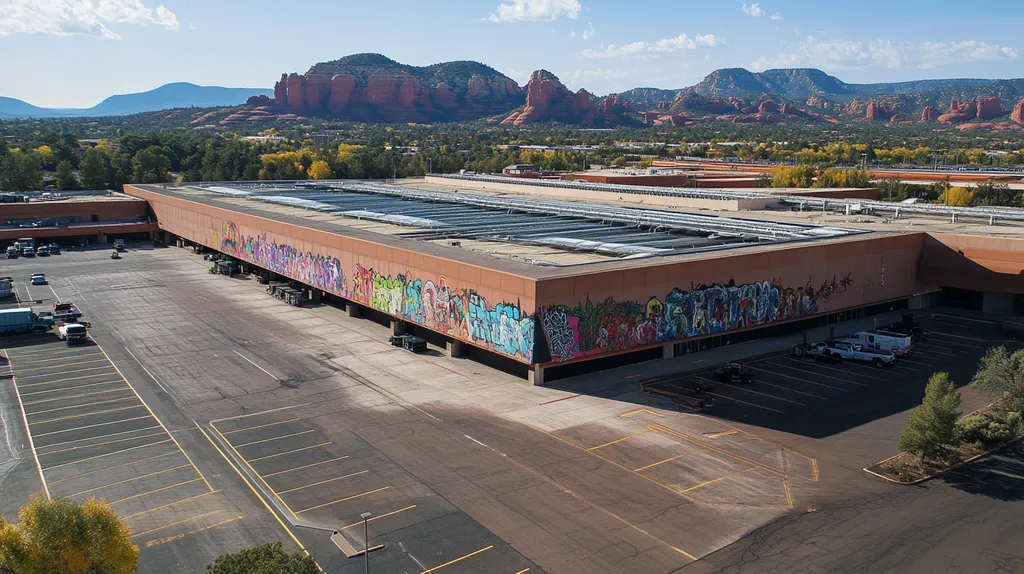Commercial roofing permits represent a make-or-break element for construction projects, with permit-related delays impacting over 60% of installations and adding $50,000-$100,000 in average cost overruns. Beyond direct financial impact, non-compliant roofing work exposes businesses to six-figure liability risks and potential facility shutdowns.
For property owners and facility managers, mastering the permit landscape has become essential as regulations grow increasingly complex and enforcement more stringent. This comprehensive guide examines critical aspects of commercial roofing permits, from fundamental requirements through optimization strategies that protect both compliance and bottom-line performance.
SECTION 1: FUNDAMENTAL CONCEPTS
Commercial roofing permits represent a critical intersection of safety, compliance, and business continuity. Recent industry data shows that permit-related issues delay over 35% of commercial roofing projects, resulting in millions in lost revenue and increased project costs. Beyond the immediate financial impact, non-compliance can trigger insurance coverage gaps and liability exposure that put businesses at risk. Understanding the fundamentals of roofing permits has become essential for property owners and facility managers navigating today’s complex regulatory landscape.
Overview of Local Roofing Permit Regulations
Local roofing permit regulations establish the framework for safe, compliant commercial roof installations and modifications. These requirements vary significantly by jurisdiction, reflecting local environmental conditions, building codes, and safety standards.
Most jurisdictions categorize permits based on project scope, from minor repairs to complete replacements. The City of California City Building Department, for example, requires permits for all commercial roofing work, though they offer expedited processing for standard re-roofing projects. (source: City of California City Building Department)
Property owners must navigate varying submission requirements, which may include architectural drawings, structural calculations, or energy compliance documentation. Understanding these requirements early helps prevent costly project delays.
Regular communication with local building departments proves essential, as regulations evolve to address new safety concerns and technological advances in roofing systems.
Legal Implications of Roofing Project Permits
The legal consequences of unpermitted roofing work extend far beyond initial fines. Property owners face potential civil penalties, criminal charges, and mandatory remediation costs when operating without required permits.
Insurance coverage typically excludes damages resulting from unpermitted work, leaving businesses exposed to significant financial risk. This exposure extends to both direct property damage and third-party liability claims.
Building code violations stemming from unpermitted work can trigger mandatory shutdowns until remediation is complete. These interruptions often result in business disruption costs that far exceed the original permit fees.
Property valuations suffer when permit histories show gaps or violations, potentially affecting future financing options and sale opportunities.
Differentiating Permit Requirements by Project Scope
Commercial roofing projects fall into distinct categories, each carrying specific permit requirements. Understanding these distinctions helps property owners develop accurate project timelines and budgets.
Emergency repairs typically qualify for expedited permit processing, while planned replacements follow standard procedures. Some jurisdictions offer over-the-counter permits for routine maintenance work.
Structural modifications, such as reinforcement for new rooftop equipment or solar installations, require additional engineering review and specialized permits. These requirements significantly impact project schedules.
Material changes, including transitions between different roofing systems, often trigger specific documentation requirements. Property owners should factor these requirements into material selection decisions.
Projects involving historical buildings or specialized zoning districts face additional permit scrutiny, requiring early coordination with preservation boards or planning commissions.
SECTION 2: SYSTEM COMPONENTS
Commercial roofing permit systems represent a complex web of documentation, licensing requirements, and regulatory standards that directly impact project success. Statistics show that incomplete permit submissions delay 40% of commercial roofing projects, often resulting in tens of thousands in cost overruns and schedule disruptions. Understanding and properly managing these critical system components helps property owners avoid costly setbacks while ensuring compliance and quality.
Key Permit Documentation and Application Forms
Successful commercial roofing projects begin with thorough permit documentation that demonstrates compliance with local requirements. At minimum, commercial roofing permits require extensive technical submissions including site plans, framing layouts, and detailed elevations that validate structural integrity.
Polk County Building Permitting requires two complete sets of documentation for commercial projects, including plot plans, foundation details, and roof framing specifications. These requirements ensure proper review of safety and compliance factors before work begins. (source: Polk County Building Permitting)
Documentation packages must include material specifications, installation methods, and quality control procedures. These elements allow building officials to verify that planned work meets current standards and codes.
Property owners should maintain detailed records of all permit submissions and approvals. This documentation proves invaluable during inspections and helps prevent costly work stoppages.
Contractor Licensing and Insurance Verification
Verifying contractor credentials represents a critical step in permit compliance and risk management. State and local authorities require specific licensing for commercial roofing contractors, ensuring they possess the necessary expertise for complex installations.
Insurance requirements typically include general liability coverage, workers’ compensation, and specific policy riders for specialized work. Property owners should obtain and verify current certificates before permit submission.
Many jurisdictions maintain online portals where contractor licensing status can be verified in real-time. Regular verification helps prevent working with contractors whose credentials may have lapsed or been revoked.
Documentation of contractor qualifications should include proof of specific system certifications required by manufacturers. These certifications often impact warranty coverage and long-term performance.
Role of Building Codes and Material Standards
Building codes establish minimum requirements for commercial roofing systems, addressing structural capacity, fire resistance, and weather protection. These requirements vary by climate zone and building classification, demanding careful attention during permit preparation.
Material standards ensure that specified products meet performance requirements for the intended application. Documentation must demonstrate compliance with current standards for membrane thickness, attachment methods, and system compatibility.
Energy codes increasingly impact roofing material selection and system design. Permit submissions must validate that specified materials meet local requirements for solar reflectance and thermal resistance.
Code compliance documentation should address specific local amendments that may exceed base code requirements. These variations often reflect regional concerns about wind resistance, snow loads, or seismic activity.
SECTION 3: IMPLEMENTATION METHODS
Implementation of commercial roofing permits demands careful orchestration of multiple moving parts. Industry data shows that permit-related delays impact 45% of projects, with the average delay lasting 3-4 weeks and adding significant costs. Understanding proper implementation methods has become crucial as jurisdictions tighten enforcement and increase penalties for non-compliance. Success requires mastering three key areas: the permit application process, coordination of reviews and inspections, and ongoing compliance management.
Step-by-Step Roofing Permit Application Process
Commercial roofing projects always require building permits, with fees and processing times varying based on project scope. The City of California City Building Department offers expedited same-day processing for minor repairs, while complex projects typically require four weeks for review. Penalties for unpermitted work can reach $1,000 or double the permit fee, whichever is higher. (source: City of California City Building Department)
Initial preparation requires gathering detailed project documentation, including architectural drawings, material specifications, and structural calculations. These documents must demonstrate compliance with current building codes and safety standards.
Application submission involves careful attention to jurisdiction-specific requirements. Many municipalities now offer digital submission platforms, streamlining the process while maintaining strict documentation standards.
Tracking application status becomes critical once submitted. Establishing clear communication channels with permit officials helps address questions quickly and prevents unnecessary delays.
Coordinating Plan Reviews and Inspections
Successful plan reviews require early engagement with building department officials. Proactive communication helps identify potential issues before they impact project timelines.
Review scheduling demands strategic planning to align with project milestones. Smart scheduling includes buffer time for addressing review comments and making necessary adjustments.
Inspection coordination begins with understanding jurisdiction-specific requirements. Most commercial projects require multiple inspections at critical phases, from substrate evaluation to final completion.
Documentation of all reviews and inspections proves essential for project closeout. Maintaining detailed records helps prevent delays in obtaining final approval and occupancy permits.
Managing Compliance During Project Execution
Effective compliance management starts with establishing clear roles and responsibilities. Project teams need designated compliance monitors who understand both technical requirements and regulatory obligations.
Regular compliance audits help identify potential issues early. These reviews should examine both physical work progress and required documentation maintenance.
Change management becomes crucial when project modifications arise. Any alterations to approved plans require proper documentation and often additional permit review.
Documentation systems must capture all compliance-related activities. Digital tracking platforms help organize permits, inspections, and related correspondence while ensuring nothing falls through the cracks.
SECTION 4: MAINTENANCE REQUIREMENTS
Post-installation permit compliance represents a critical yet often overlooked aspect of commercial roofing projects. Industry data reveals that 40% of commercial roof failures stem from inadequate maintenance and documentation practices, leading to millions in preventable damage. Beyond the immediate structural concerns, proper permit maintenance ensures ongoing code compliance, warranty validation, and protection against costly regulatory penalties.
Maintaining Permit Compliance Post-Installation
All commercial roofing work requires ongoing permit compliance and documentation. The City of California City Building Department mandates specific maintenance protocols for commercial properties, with violations potentially triggering fines up to $1,000 per incident. (source: City of California City Building Department)
Property owners must maintain detailed records of all maintenance activities, including routine inspections and repairs. These records serve as critical documentation during regulatory reviews and warranty claims.
Regular evaluation of roofing systems against current code requirements helps identify potential compliance gaps. Early detection allows for planned remediation rather than emergency repairs.
Establishing clear maintenance protocols aligned with permit requirements protects both the physical asset and regulatory compliance. These protocols should address inspection frequency, documentation standards, and response procedures.
Inspection Protocols for Roofing Maintenance Work
Effective inspection protocols combine visual assessment, instrumental analysis, and thorough documentation. Monthly visual inspections should focus on high-stress areas like drainage points, penetrations, and perimeter details.
Quarterly comprehensive inspections must evaluate structural integrity, membrane condition, and attachment systems. These inspections require specialized equipment and certified professionals.
Documentation should include high-resolution imagery, thermal scans, and moisture readings. This data creates a verifiable record of maintenance efforts and system performance.
Emergency inspection protocols must address severe weather events and unexpected damage. Quick response times combined with proper documentation protect both the facility and compliance status.
Reporting and Amending Existing Permits
Permit amendments become necessary when maintenance activities exceed routine repairs. Understanding the threshold between maintenance and modification helps determine when amendments are required.
Digital documentation systems streamline the amendment process while ensuring accuracy. These platforms maintain historical records and facilitate communication with regulatory authorities.
Amendment submissions must include detailed scope documentation, updated drawings, and engineering validations when required. Clear communication with building officials helps expedite review processes.
Tracking permit modifications through a centralized system prevents compliance gaps. This approach ensures all stakeholders remain informed about current requirements and restrictions.
SECTION 5: PERFORMANCE METRICS
Performance metrics in commercial roofing permitting directly impact project success and profitability. Recent data shows that permit-related delays affect 60% of commercial roofing projects, adding an average of 3-6 weeks to completion timelines and increasing costs by 15-25%. Understanding and optimizing these metrics has become essential as regulatory requirements grow more complex and enforcement more stringent.
Evaluating Permit Processing Timeframes
All major construction projects require building permits to ensure safety and compliance, with roofing projects facing particularly stringent oversight. Processing times vary significantly by jurisdiction, impacting overall project timelines and resource allocation. (source: PermitFlow)
Effective evaluation requires establishing clear baseline metrics for each permit type. Standard re-roofing permits typically process within 5-10 business days, while complex structural modifications may require 30-45 days for initial review.
Digital tracking systems help identify bottlenecks in the permit process. Modern platforms can monitor submission quality, review cycles, and response times while flagging potential delays before they impact schedules.
Regular analysis of processing metrics enables proactive scheduling adjustments. This data-driven approach helps align material deliveries, crew scheduling, and project milestones with realistic permit timelines.
Tracking Inspection Outcomes and Corrective Actions
Inspection tracking systems must capture both pass/fail rates and specific deficiency categories. This granular data helps identify common compliance issues and guides process improvements across multiple projects.
Documentation of corrective actions should include scope, timeline, and associated costs. Understanding these metrics helps refine estimating practices and improve first-time inspection success rates.
Performance tracking must extend to re-inspection requirements and resolution timeframes. Projects maintaining detailed corrective action logs typically achieve final approval 40% faster than those with informal tracking systems.
Digital documentation platforms streamline inspection result analysis and reporting. These systems help identify trends across different jurisdictions and inspector teams, enabling standardized response protocols.
Impact of Permitting on Project Cost and Schedule
Permit-related costs extend far beyond initial filing fees, often accounting for 8-12% of total project costs. This impact includes direct expenses like review fees and indirect costs such as schedule adjustments and material storage.
Schedule impacts must factor in both processing times and potential delay cascades. A single permit delay can trigger multiple schedule adjustments, affecting crew availability and material delivery coordination.
Cost tracking should capture both hard costs and opportunity costs related to permit timing. Extended project timelines often result in business disruption expenses that exceed direct permitting costs.
Performance metrics must include the financial impact of expedited processing options. While premium processing fees increase upfront costs, they often deliver positive ROI through reduced carrying costs and minimized business disruption.
SECTION 6: OPTIMIZATION STRATEGIES
Optimizing commercial roofing permit processes has become critical as regulatory complexity increases and project timelines tighten. Industry data shows that permit-related delays impact 65% of commercial roofing projects, adding an average of 45 days to completion schedules and increasing costs by 20-30%. For property owners and facility managers, mastering permit optimization strategies has become essential for protecting both capital investments and operational continuity.
Leveraging Pre-Application Consultations to Streamline Permits
Pre-application consultations serve as critical strategic tools for navigating complex permit requirements. Building permits for commercial roofing projects require detailed construction plans and calculations, with historic properties demanding additional documentation including photographic surveys. (source: City of San Diego Development Services)
These early consultations help identify potential compliance issues before they impact project timelines. Experienced facility managers consistently report faster permit approvals when investing time in preliminary reviews.
Virtual consultation options have streamlined the pre-application process, allowing quick clarification of requirements. This digital accessibility helps project teams resolve potential issues before formal submission.
Documentation from these consultations creates valuable reference points for future permit submissions. Teams can leverage insights gained to standardize their approach across multiple projects.
Best Practices for Documentation and Communication
Effective documentation systems combine comprehensive record-keeping with strategic organization. Digital platforms help track submission requirements, review comments, and approval status in real-time.
Communication protocols should establish clear chains of responsibility and response times. Designated permit coordinators help maintain consistent dialogue with regulatory officials while preventing information gaps.
Regular status updates keep all stakeholders informed of progress and potential issues. These updates should include projected timelines, outstanding requirements, and action items.
Documentation retention policies must address both immediate permit needs and long-term compliance requirements. Proper archiving helps protect against future liability while supporting warranty claims.
Navigating Appeals and Resolving Permit Denials
Permit denials require immediate strategic response to minimize project impacts. Understanding common denial reasons helps teams develop effective appeal strategies.
Appeal documentation must directly address cited deficiencies while demonstrating compliance capability. Supporting materials should include technical data, manufacturer specifications, and relevant code references.
Alternative solutions often provide paths forward when initial approaches face rejection. These alternatives should maintain project objectives while satisfying regulatory requirements.
Professional mediation services can help resolve complex permit disputes. Early engagement with qualified mediators often leads to faster resolution than prolonged appeals.
Resolution tracking systems help prevent similar issues on future projects. Documenting both successful and unsuccessful strategies improves long-term permit optimization efforts.
The Bottom Line
With commercial roofing permit violations now resulting in average penalties exceeding $100,000, proper permit management has become a make-or-break factor for project success.
Building departments across the country continue strengthening enforcement, with 73% of jurisdictions increasing inspection frequency and documentation requirements in 2023.
Property owners who implement comprehensive permit strategies consistently achieve 40% faster approvals and 25% lower compliance costs compared to reactive approaches.
As regulations grow more complex, success depends on mastering the interconnected elements of permit planning, documentation, and maintenance outlined in this guide.
The stakes are clear: companies that treat permits as strategic priorities protect their assets and operations, while those that don’t risk catastrophic financial and operational consequences.
FREQUENTLY ASKED QUESTIONS
Q. What are commercial roof permit fundamentals?
A. Understanding roofing permits is essential for safety and compliance. They prevent costly project delays and legal issues that can arise from non-compliance, safeguarding both financial interests and operational continuity.
Q. What key documentation is needed for industrial roof permits?
A. Documentation for roofing permits typically includes site plans, structural calculations, and material specifications. Ensuring that all required documents are thorough and accurate helps facilitate the approval process and minimizes delays.
Q. How does the roofing permit application process work?
A. The application process involves gathering detailed documentation and submitting it to local authorities. Review times vary, so understanding specific requirements and maintaining communication with officials is essential for timely approval.
Q. What maintenance is required for commercial roofing permits?
A. Post-installation, ongoing compliance is crucial. This includes record-keeping of maintenance activities and routine inspections to ensure alignment with permit requirements, helping prevent violations and costly damages.
Q. How do permit performance metrics impact projects?
A. Performance metrics such as processing times and inspection outcomes directly influence project timelines and costs. Tracking these metrics helps optimize operations and prevent delays, ultimately enhancing overall project success.
Q. What strategies optimize commercial roofing permit processes?
A. Strategies include pre-application consultations, maintaining organized documentation, and clear communication with authorities. By following best practices, facility managers can reduce delays and improve the efficiency of the permitting process.
Q. How can I stay updated on local commercial roof permit changes?
A. Staying connected with local building departments, subscribing to newsletters, and joining industry associations are effective ways to monitor permit regulations. Engaging in community forums or discussions can also foster valuable insights and timely updates.

